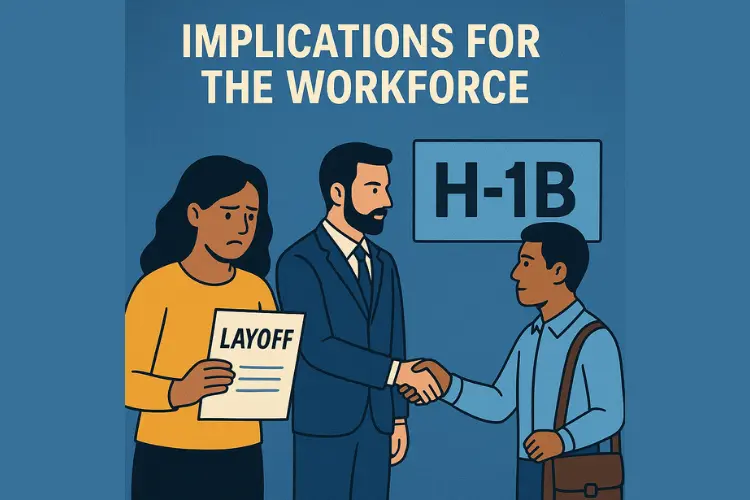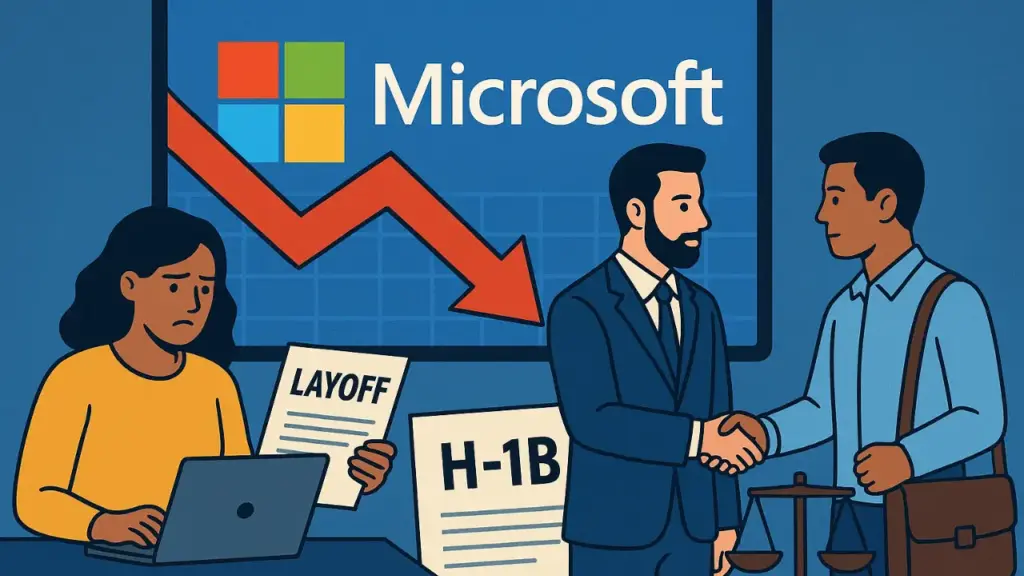1. Introduction
Microsoft is one of the most powerful tech companies in the world. It has shaped industries, influenced innovation, and built products that billions use every day. In recent months, however, the company has been in the spotlight for reasons beyond its technology.
The headlines are shocking: record profits, massive layoffs of American workers, and a sharp rise in H-1B visa applications for foreign hires. This combination has sparked debates about corporate ethics, workforce priorities, and the future of American tech jobs.
Is this simply a business strategy aimed at efficiency? Or is it a case of corporate greed, where people are expendable in the pursuit of profit? This blog takes a deep look into Microsoft’s moves — and what they mean for the tech industry and society at large.
2. Record Profits Amid Layoffs
Microsoft recently announced record-breaking financial results. Revenue hit historic highs. Cloud computing services, AI partnerships, and enterprise software sales contributed to unprecedented earnings. Investors celebrated. Stock prices climbed.
But alongside these profits came unsettling news. Thousands of employees across the U.S. were told their jobs were ending. This contrast — profit at the top, pain at the bottom — left many questioning Microsoft’s priorities.
For the company, the official explanation was about “realigning resources” to meet future demands. Critics saw it differently. To them, the layoffs were not about strategy but about maximizing profit margins, even when there was no visible financial strain.
3. The Mass Layoffs Explained
The layoffs were not confined to one area. Engineers, project managers, marketing specialists, and support teams were all affected. Some had worked with the company for decades. Others had joined recently, drawn by Microsoft’s reputation as a stable and innovative employer.
The announcement was swift. For many, the news came with little warning. Meetings that were scheduled as “updates” turned into termination discussions. Severance packages were offered, but they could not replace the stability and career growth many employees had lost.
The scale of these layoffs — during a time of record profitability — raised eyebrows not only in the tech industry but also among policymakers. Why cut so many jobs when the company had the resources to retain talent?
4. Surge in H-1B Visa Hiring
While American employees were packing their desks, Microsoft was making headlines for another reason: a spike in H-1B visa applications. The H-1B program allows companies to hire highly skilled foreign workers, often in fields like software engineering and data science.
The numbers showed a clear trend — Microsoft was seeking more foreign hires than in previous years. Many of these roles mirrored positions recently vacated by laid-off U.S. employees. This led to accusations that the company was replacing domestic workers with cheaper foreign labor.
Microsoft defended the practice, saying it needed “global talent” to remain competitive in emerging fields like AI, cybersecurity, and quantum computing. Supporters of the policy argued that specialized roles require skills not always available domestically. Critics countered that the company should invest more in training the existing U.S. workforce.
5. Were the Layoffs Planned?
A major question emerged: Were these layoffs part of a long-term plan?
Some industry analysts believe they were. They point to the timing — layoffs announced just before H-1B applications surged — as more than a coincidence. The suspicion is that Microsoft had already mapped out a workforce reshuffle to cut costs while maintaining productivity.
Others say this is simply corporate pragmatism. In fast-changing tech markets, companies adapt quickly. But even in that light, the optics are damaging. When a company posts billions in profits yet lets go of thousands, it signals that people are a lower priority than financial performance.
A fractional CTO consulting for mid-sized tech firms noted, “This is a reminder that loyalty in the corporate world is one-directional. Businesses are loyal to their bottom line, not their people. The real skill for employees is staying adaptable.”
6. Corporate Ethics in Question
Corporate social responsibility is not just a buzzword. For companies like Microsoft, it’s a key part of maintaining public trust. But this trust is fragile. Moves that prioritize shareholder value over employee welfare can erode decades of goodwill.
The ethical debate here is simple but powerful: Should a company with record profits cut jobs? From a financial standpoint, the answer might be yes if it increases efficiency. From a moral standpoint, it feels wrong.
Critics also point out the disparity between executive compensation and workforce cuts. While thousands lose their livelihoods, top executives often receive multimillion-dollar bonuses tied to those same “efficiency gains.”
This is where corporate ethics intersect with long-term brand reputation. Customers, employees, and investors are all watching closely.
7. Implications for the Workforce
The consequences of Microsoft’s moves extend far beyond the company’s own offices. For American tech workers, the message is clear: even high performance and loyalty don’t guarantee job security.
In the short term, this can create instability in the job market. Workers may become more hesitant to join big corporations, fearing sudden restructuring. Smaller companies and startups may benefit, attracting talent seeking a more stable and transparent environment.
In the long term, the U.S. tech workforce could see a shift in wage structures. If more companies follow Microsoft’s example, salaries for certain roles could stagnate as cheaper overseas talent becomes more common.
Policy responses may also emerge. Lawmakers have already called for reviews of H-1B hiring practices, particularly when companies lay off domestic workers in similar roles.

8. Conclusion
Microsoft’s recent decisions have sparked one of the most heated debates in the corporate world this year. The mix of record profits, widespread layoffs, and increased H-1B hiring raises serious questions about the balance between business efficiency and ethical responsibility.
For employees, the lesson is to remain adaptable, continuously update skills, and stay aware of shifting corporate priorities. For business leaders — including fractional CTO professionals advising companies — the challenge is to innovate without undermining workforce trust.
At the heart of this issue is a question every corporation must answer: Can you grow and adapt without sacrificing the people who built your success?
The discussion won’t end here. Analysts, policymakers, and employees will continue to watch how Microsoft and other tech giants handle future workforce changes. And at StartupHakk, we believe transparency, ethics, and strategic innovation should go hand in hand — because progress means little if it leaves people behind.




